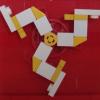Sign in to follow this
Followers
0

Landing Craft Assault (LCA 888) Pointe Du Hoc MOC
By
greg3, in Special LEGO Themes
-
Recently Browsing 0 members
No registered users viewing this page.
